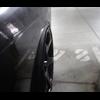Summary: Front Mount Intercooler Options & Piping Layouts
Announcements
-
Similar Content
-
Latest Posts
-
Yea - I mean I've seen my fuel pump which is decades old and uh, while I'm not saying this with real knowledge... but I sure get the ick at using anything in the fuel system that produced the state of that pump. Many years ago I went through multiple pumps (and strainers) before I dropped the tank to clean it out with extreme violence. I'm talking the car would do maybe 50km before coming to a halt, which resulted in me cleaning out the filter with some brake cleaner and going on my way. None of my stuff ever looked like what came out of your fuel tank. I don't think I'd be happy with it unless every single component was replaced (or at least checked/cleaned/confirmed to be clean here).
-
I'm not going to recommend an EBC pad. I don't like them. Just about anything else would suit me better. I've been using Intima pads for a while now.
-
Agreed, and in particular the earth strap that should go from the subframe to the chassis but it often broken or left off. There is a section in the R32 workshop manual you can follow for troubleshooting if you don't see anything suspicious, and depending where you are (there is no location on your user profile) you should be able to get your hands on a second hand replacement unit still if needed
-
Yeah they mention as a R34 for 2.5 Turbo...but then again thos "small" were also for R34 by that different site. But i look into it and that 310mm EBC is for R34 GTT. And by those you linked the specs are the same 🙂 EDIT: I found these on one site here: DBA 4000 series T3 DBA42304S They are 310mm...and it says are for R34GTT...are there good? EDIT2: ok they have pads too. What "color" should i get for street use? I dont want/need some noisy ones...(and if they are not that dusty that is good too)
-
Yeah, shame. Maybe driver's carpet is available 🙏. I am waiting for both amayama and nangun to confirm.
-









Recommended Posts
Create an account or sign in to comment
You need to be a member in order to leave a comment
Create an account
Sign up for a new account in our community. It's easy!
Register a new accountSign in
Already have an account? Sign in here.
Sign In Now